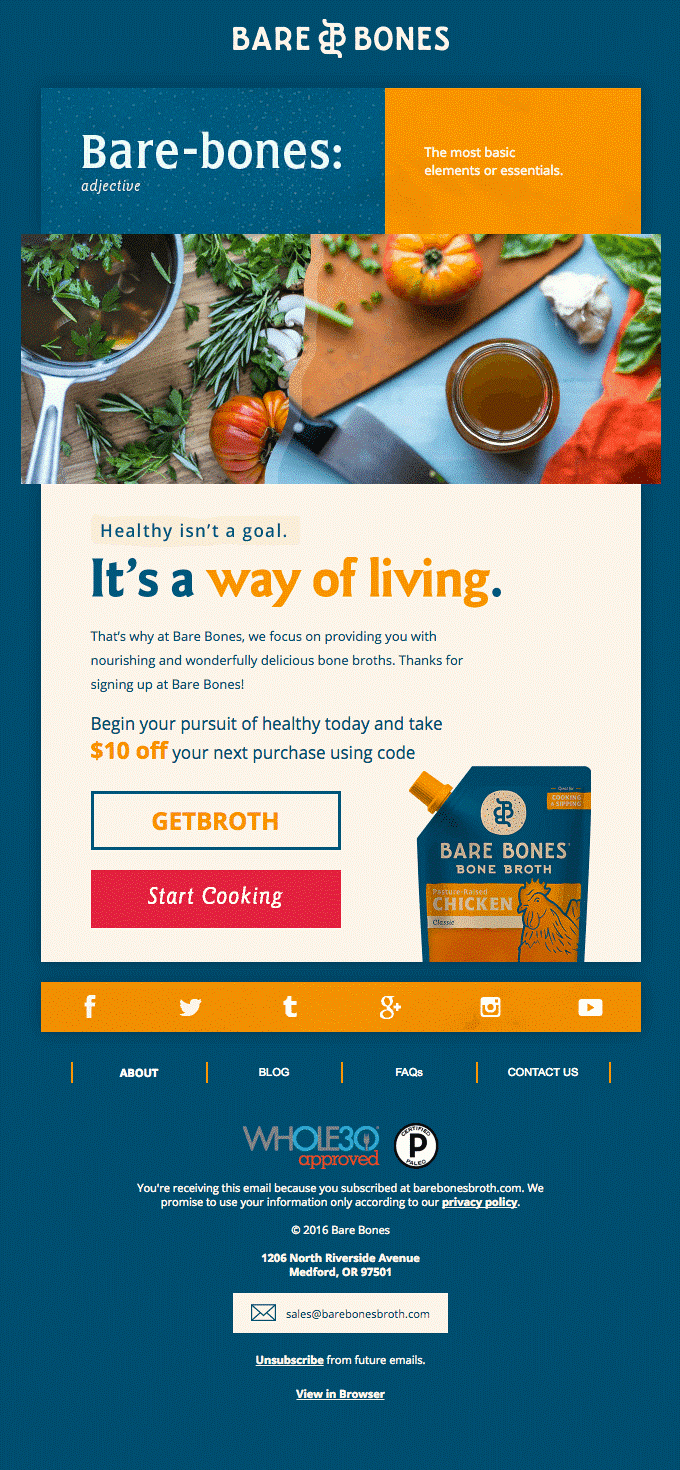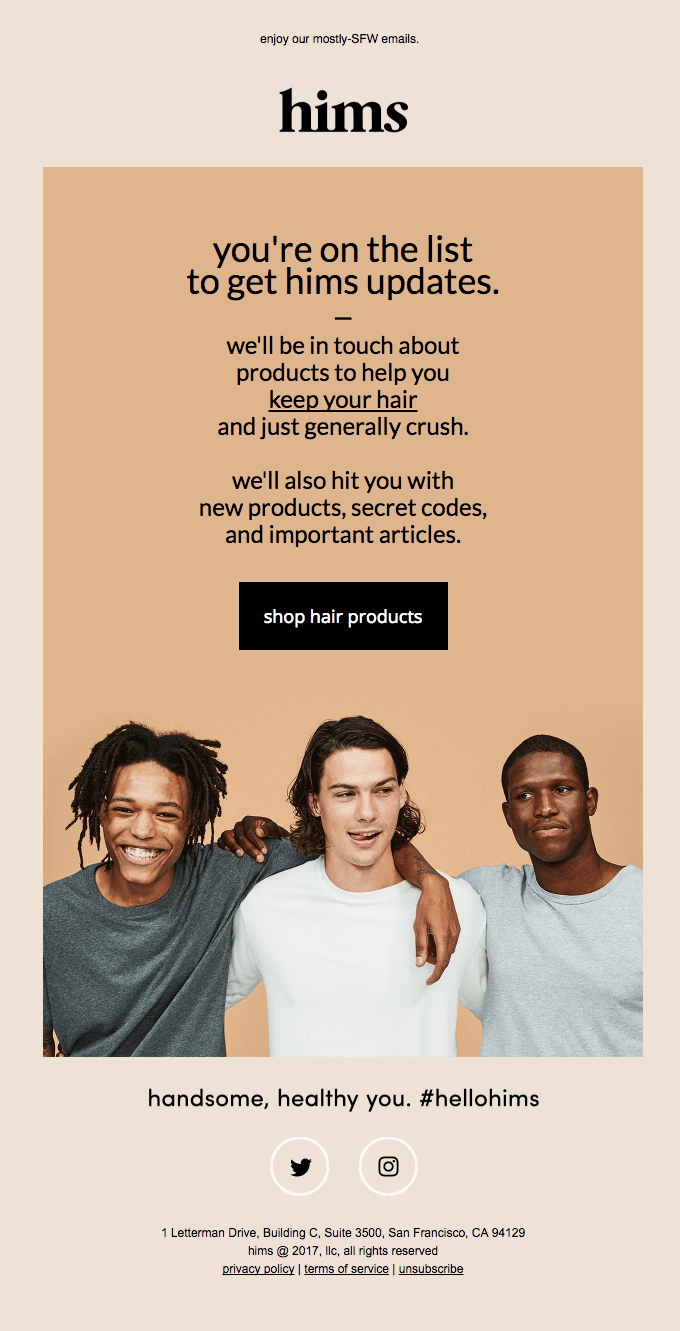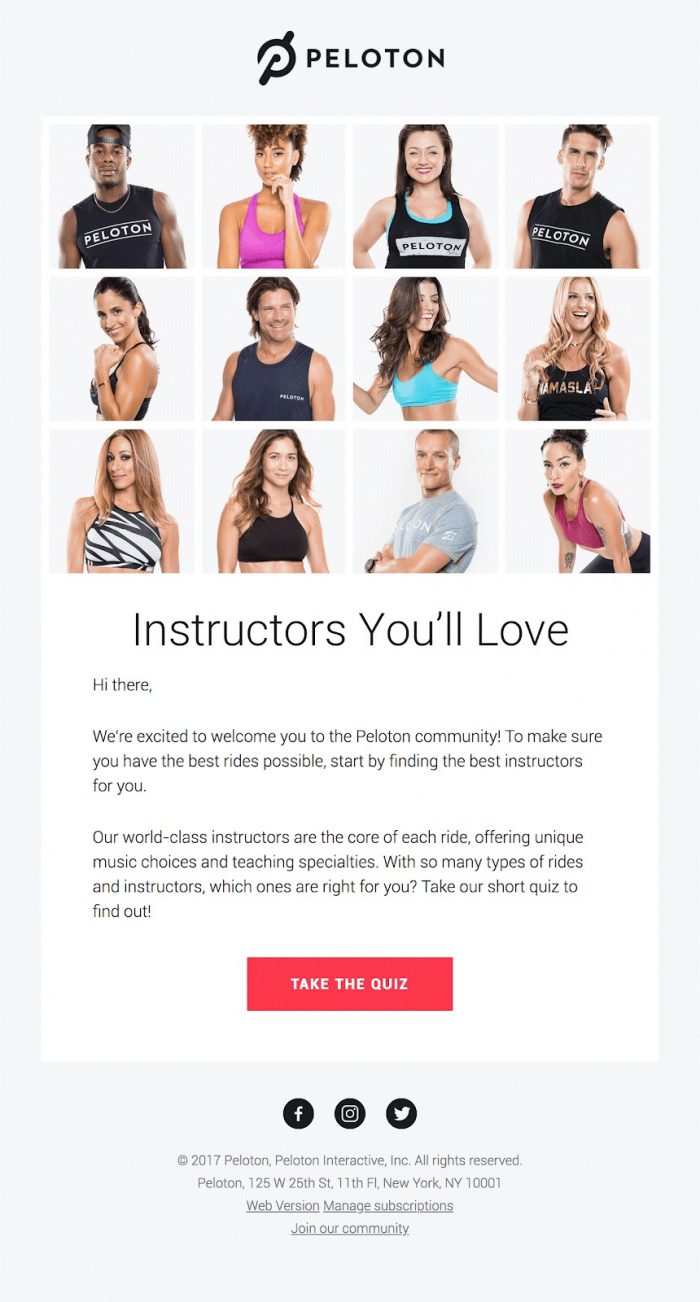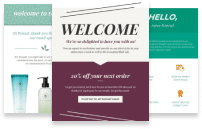First impressions count. They have the ability to make or break your business. And that’s why your welcome emails not only have to showcase your brand in the best possible light, but also have to engage your customers in the right way.
Welcome emails are a vital part of any marketing campaign so we’ve provided everything you need to know to make yours successful, including the top 7 welcome email dos and don’ts.
Why are welcome emails so important?
Open rates for welcome emails are, on average, 50%. This means that, compared to standard newsletters, they are 86% more effective.
Frankly, you’re never going to get this type of opportunity or success rate ever again, so you need to make the most of it.
However, over 50% of brands don’t automatically send a welcome email when their customers or potential customers subscribe. When 74% of new subscribers expect this type of email and subscribers show a 33% higher engagement rate on a long-term basis, you can’t afford to miss this opportunity.
When a customer has gone to the effort of signing up to your mailing list, it is clear your brand already resonates with them. They want to know more about your company and they might be very close to making a purchase.
These customers are hot leads. But lack of effective communication on your part could soon turn them into leads for your competitors instead.
This welcome email from PrettyLittleThing introduces their newest subscribers to their highest performing pages while maintaining a clear and consistent branding:
Source: Really Good Emails
The top 7 welcome email dos and don’ts
Here are our top welcome email dos and don’ts that will drive stellar results and boost your email marketing ROI.
1. Do reassure them that they’ve made the right choice
First, you need to put your new recipient’s mind at ease and prove to them they’ve made the right decision to sign up to your mailing list. After all, they’ve made a big commitment to you already by handing over their email address and inviting you into their crowded inbox. After all, these days, they’re all crowded inboxes.
In order to reassure them they’ve made a good choice, start by considering your email subject line. This needs to welcome them to your mailing list and show you aren’t spam while still being clickable.
Something simple like, “Thanks for letting us into your inbox! Now what?” is straightforward and transparent.
Then, inside the email, welcome them to your brand’s community by starting a conversation with them. One of the great aspects of email marketing is the way it allows you to dialogue with your customers and deliver value right into their hands. Be sure that you deliver on these expectations from the very first.
Finally, don’t forget to reiterate your privacy policies, reassuring them that their email address is safe and won’t be passed on to numerous advertising companies.
2. Don’t fail to deliver on your promise
If you enticed customers to sign up to your mailing list by offering them discounts, free downloads, free delivery, and so on, don’t fail to deliver in your welcome email.
This not only provides the customer with their incentive to shop with you but it also goes one step further toward building trust with them. If you promise your subscribers something, you better deliver.
For example, the team at Bare Bones presents their new subscribers with a $10 off discount code in their welcome email.
Source: Really Good Emails
3. Do set some expectations for the future
Your welcome email serves as an opportunity to show your newest subscribers what’s in store for the future. If you plan on sending emails at weekly, bi-weekly, or monthly intervals, make sure they know that straight away.
Instead of making yourself guess how frequently your subscribers would like to hear from them, consider just asking your subscribers their preference. That way, you know you’re getting the right balance and you’ll meet their expectations.
Equally, whatever frequency you (and your customer) choose, it’s crucial to actually do what you say you’ll do. Don’t say you’re going to email once a week and then only send out something once a month or vice versa. Even if you think they won’t mind if you limit your frequency, you’ve made a promise to your subscribers and any change needs to be clearly communicated to them.
Your relationship with your subscribers is just that — a relationship. You don’t want your friends telling you something and then doing something else, and neither do your subscribers. Remember, there are humans on the other side of those email addresses who deserve to be treated as such.
And finally, be sure to make it easy for your new recipients to unsubscribe.
While you hope they don’t want to unsubscribe immediately, you need to ensure they can do so if they want to. Otherwise, you risk having your emails flagged as spam which will start to harm your sender’s reputation. Not to mention, it’s the law.
Source: Really Good Emails
4. Do consider the timing and frequency of your welcome emails
The frequency of your emails is imperative to their success. And you also need to time them just right, too.
A report by Experian found that real-time welcome emails generate 10 times more transactions than welcome emails that are sent in batches.
And it doesn’t take a genius to understand why.
A customer who has just signed up to your email subscription list has your brand on the brain. They’re expecting to hear from you. If you can get your email in front of them while your brand’s at the forefront of their mind, you’re far more likely to convert this lead into a customer.
5. Don’t just send one welcome email
While it’s imperative you don’t bombard your customers with email after email, you may also benefit from sending a welcome series of emails over a period of time. That way, you can engage your subscribers in different ways and present them with different information without overloading them in one email.
For example, you can tailor your welcome emails based on what stage in the sales funnel your customer is in.
So if you send a welcome email and they make a purchase, you can send them an email with new products in it, and then perhaps a coupon. After all, welcome emails with coupons have 2.5 times higher transaction rates.
Alternatively, if they don’t make a purchase after the initial welcome email, you could provide them with more information on your brand and its products or services. And if they still don’t buy from you, you can move on to encourage them to interact with you in different ways.
Source: Really Good Emails
6. Do encourage them to engage in other ways
You don’t have to interact with your customers solely by email and should encourage them to engage with you on a variety of different platforms. Now’s the ideal time to ask new subscribers to join you on social media or to get in touch with you by phone: Marketing channels work best when they work together.
Essentially, you want to make sure your subscribers feel they can contact you in whatever way they want to. They want to feel like you’re wherever they are and they want to know you’re listening. Connecting with your customers on multiple channels means you care about more than just their money.
However, always make sure the channels you suggest in your welcome email are ones you use avidly. The last thing you want is to send customers to a communication channel if you don’t use it properly and can’t provide them with the information and service they’re expecting. If you invite your subscribers to join you on Twitter, then you need to be active and vocal on Twitter.
Including screenshots of your social media accounts—perhaps highlighting a positive comment from a customer or a recent competition you ran—teases your subscriber with just enough of your content to make them curious and hopefully inspire them to join you.
Source: Really Good Emails
7. Don’t send impersonal emails
While you want to automate the sending of your welcome emails, it’s important to add some personal touches to these emails.
For instance, you can ensure the subject line includes the recipient’s name to up the personalization factor. Try something like “Welcome on board, [NAME]! What’s next?” Taking this time to feature this personal touch will ensure a higher open rate and more interaction from your recipients without much extra effort from you.
But don’t stop with adding a subscriber’s name. Going further with personalization can make a big impression, such as talking about a specific product they’ve viewed or featuring content that specific subscriber likes to read. Segmentation makes such specific personalization fairly simple.
Adding personal touches to your email showcases the human side of your company while also proving you understand that your contacts are human, too.
The more they read, the more they spend
Creating a series of welcome emails is a great way to skyrocket your company’s ROI but it’s important you make sure your recipients are engaging with the emails you’re sending. According to studies, the more you can get your recipients to read your welcome emails, the more money they’re likely to spend with you.
In the study, if a recipient didn’t read any of the three welcome messages sent by the brands, they spent, on average, $247. However, when they read all three of the messages, they spent an average of $391.
This means customers are spending an average of 58% more when they’re engaged in welcome emails. By tapping into some of your most enthusiastic fans, you can tap into greater revenue for your company.
Wrap up
If you don’t already send welcome emails, what are you waiting for?
When you send personalized, timely, and engaging emails while your brand is at the forefront of customers’ minds, you’re taking those all-important steps toward building a long-term relationship with your subscribers. And your subscribers will thank you for it by sharing and engaging with your emails.
And remember, your welcome emails don’t need to be perfect. But it is important that you follow these key welcome email dos and don’ts. That way, you’ll be building strong, long-lasting relationships with your subscribers, turning customers into lifelong brand ambassadors.
Ready to start designing your next batch of welcome emails with confidence? Check out our free welcome email templates and transactional email templates to help refresh your email designs in minutes.










